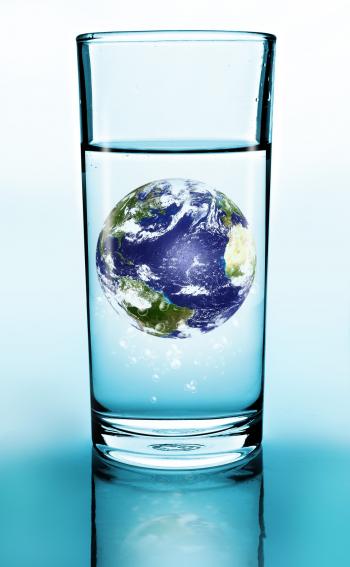Water shouldn’t really be wet! It shouldn’t be liquid. It should be a gas. After all, all other similar molecules are gases at room temperature. Bob explains why water—beyond its obvious life-giving properties—is truly astonishing.
It’s hard not to appreciate water, despite it being the most common compound in the cosmos.
Water usually takes the form of ice or gas, arrayed beautifully. All lightweight molecules are gasses: carbon dioxide, methane. From hydrogen to oxygen, all molecules or this size and weight are gasses at room temperature.
But here on Earth, it mostly shows itself in its rarest form: liquid.
Did you know: The rings of Saturn are countless ice chunks. Comet tails are mostly water vapor. Most stars are surrounded by steam.
(Gaseous water is actually invisible. Clouds are not vapor, but countless tiny liquid droplets. And that two-inch transparent gap between a teapot’s spout and the white “steam”—that’s the actual vapor. The white stuff popularly called “steam” really isn’t. Steam is invisible. The white cloud leaving the teapot is merely where tiny liquid droplets are starting to appear due to condensation).
Why is Water Liquid on Earth?
This liquid water phase only exists in an extremely narrow temperature range, and even that is not enough!
The H2O must also sit under pressure, supplied on this planet by our atmosphere’s weight.
Only then do you get its transparent liquid-y magic.

Next time you hold a glass of water, consider:
- Two-thirds of its contents are pure hydrogen, which composes most of the cosmos. Hydrogen, normally incapable of holding our attention for more than a few mandatory moments in chemistry lab, has managed to make us wide-eyed only a few times in our lives. When the Hindenberg and later the Challenger exploded, the fascinating and horrible spectacles were actually demonstrations of the simplest possible chemistry. Here was hydrogen releasing itself from a human cage to find its way to its favorite companion, oxygen. Their eternal offspring is water, so that during the explosions the white billowing “smoke” surrounding both dying airships was simply: cloud.
- That drinking glass’s other component, oxygen, is so much heavier than hydrogen. Atom by atom, oxygen is sixteen times more massive. Even though there are twice as many hydrogen as oxygen atoms in water, 7/8ths of the water’s weight is oxygen. Since your body is mostly water, two-thirds of your own weight is pure oxygen too. So are other animals. And the Moon, too. When coyotes howl, it’s basically a case of oxygen howling at oxygen.
Water’s Strangest Characteristic
Water’s strangest characteristic is this: The two hydrogen atoms chemically bonded to one oxygen atom that comprises water are not linked in a straight line (180 degrees) but at an angle of 105 degrees.
This fact alone has made life on Earth possible (and perhaps on endless other worlds as well). The angle of 105 degrees gives the oxygen portion has a more negative attraction and the hydrogen portion a more positive attraction. This results in water molecules aligning themselves. The oxygen of one bonds to the hydrogen of the next in a network of weak connections. So instead of being a loose mixture of individual molecules, water is a latticework that behaves like a much bigger structure.
This little feature has tremendous significance. Without such hydrogen bonding, water would be like all the other molecules of its size and weight—a gas at room temperature. This odd electrical hydrogen bonding is why your veins and brains are filled with fluid instead of vapor.
Life could not exist if water did not exist as water at room temperature!










